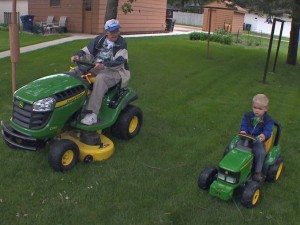 You’ve probably seen the story. By now, millions of people have. Reporter Boyd Huppert of KARE-TV in Minneapolis calls it the story that broke the Internet–a feature about a little boy and his elderly neighbor that’s been viewed and shared all over the world.
You’ve probably seen the story. By now, millions of people have. Reporter Boyd Huppert of KARE-TV in Minneapolis calls it the story that broke the Internet–a feature about a little boy and his elderly neighbor that’s been viewed and shared all over the world.
Plenty has already been written about why the story touched so many hearts. It’s universal, says photojournalist Jonathan Malat, who shot the story. “Everybody had that uncle or grandpa or next door neighbor who influenced them as a child,” he’s quoted as saying in the NPPA magazine News Photographer. “Maybe for the first time you realize some of those relationships go both ways.”
For those of us who care about the craft of video storytelling, the piece has additional lessons to teach. Huppert credits Malat’s patience, his willingness to set up and wait and wait for anticipated action to develop in the frame. He calls it Malat’s “instinct for gathering the sweet little moments that others miss.”
As he often does, Huppert downplays his own contributions. “Collect enough moments, and the writing simply becomes an exercise in connecting them,” he writes in the magazine. Oh, if it were only that easy. Too many reporters, blessed with great material, wind up writing it to death.
As you watch this story, notice how little Huppert says outright and how much he implies with just a few words. Notice how he uses those words in connection with the video. Watch Emmett’s mother wipe away a tear, make note of the next shot (the “SOLD” sign) and listen to the line that links them. See how less can be more?
One more point, highlighted in this post at TV Storytellers: Good logging can make a huge difference. Read the post to find out how it played a role in this story.








